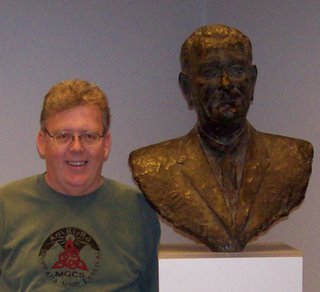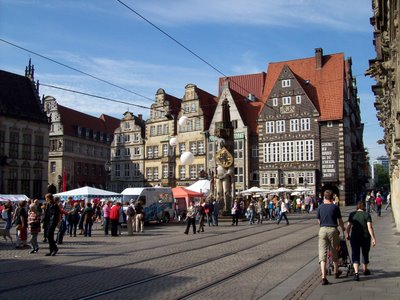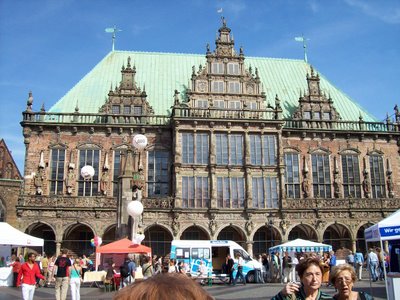LBJ Research Trip

I have been in such a rush since early August, I have not been able to tell anyone much about my trip to the LBJ Presidential Library in Austin, TX.
I received a research grant from the library to work on a project concerning the partnership between Dean Acheson and Lyndon Johnson to push for the adoption of the 1957 Civil Rights Act. I also have plans to work on a broader piece about the relationship between Johnson and Acheson that spanned from LBJ’s defense of Acheson during the Korean War to Acheson’s advice to Johnson as one of the “Wise Men” during the Vietnam War.
The Johnson library is a great place to work. The archivists know their collection very well and are also very helpful, which are two important factors that don’t always exist in the same individual archivist. The building itself is rather grandiose, much like Johnson himself.
Unfortunately, I found that Johnson’s Senate papers are not as helpful as his presidential papers. The Senate papers lack the thoroughness and organization that characterize the presidential papers. This was to be expected, to some extent, because a president has a much larger staff responsible for producing and collecting more documentation, studies, opinions, letters, etc. I did find some useful material, especially in the memos of some of Johnson’s staffers, like George Reedy. Johnson would sometimes take one of Reedy’s well-argued and well-written memos and pass it off as his own opinion.
One thing that struck me is how precarious Johnson’s position in Texas was. There are file boxes full of letters from his constituents and they contain an enormous amount of racist venom. For example:
Sept. 21, 1957
Letter from Dr. Paul Herschell Power
A physician of “diseases of the skin” in Waco, TX
Dear Senator Johnson:
“…Of course we despise that little president more than anyone else in the world because it was due to his appointment of that socio-communist, [Earl] Warren, as chief justice. That is he causing us all of the trouble we are having today.
You will notice where they have demanded that the governor in Little Rock let the negroes in the Central High School. I do not believe they will ever enter that school.
I wish for that little president that every one of his grandchildren marries the blackest, greasiest negroes in the country. Also that dear Warren’s little golden-haired daughter marries a black negro.
Of course we people of Texas like the negroes and treat them right but we do not want to sleep or eat with them.
… It is very good news to your supporters that you do believe in that Man upstairs with all your heart and I feel that you and I are both, since coming through our very serious, recent illnesses owe him more thanks than ever.
Paul Power, MD
And this from the Rev. Paul J. McLain from Nacogdoches, Feb. 12, 1957.
“May I urge you to use every possible means at your disposal to defeat the “Divil Rights Bill.” Your constituents in Texas feel this legislation is a very vital issue and must be defeated. We are counting on you for your usual fine efforts on our behalf. Very sincerely yours…”
B.E. Masters, President Emeritus of the college at Kilgore, TX
Feb. 8, 1957
“If this bill passes, it will be the worst thing that has happened to the South since Reconstruction Days. Our hopes of retaining segregation would be dimmed and there would result unhappy people with likely violence. We are depending on you at this critical period and if you succeed, the great majority of the voters of Texas will have lasting gratitude to you.”
As the developments proceeded the letters became more hostile.
“I beg you to stand and fight like a man” wrote John Adger Manning of Manning & Manning Real Estate, Columbia, SC
In the boxes that I waded through of correspondence about the issue, there were very few letters in favor of civil rights legislation. While ministers were on both sides of the issue (as they were about slavery a century earlier), a few very strong letters of support for civil rights were written by ministers and by labor unions. Given this heavy hostility, it is remarkable that Johnson moved on civil rights. It helps explain how during this period Johnson danced back and forth and found middle ways when possible. It does not seem to have anything to do with his own conviction about the injustices that existed. It had everything to do with his constituency. After all, he could accomplish nothing if he was voted out of office.
Years later when he succeeded in passing the civil rights legislation in the 1960s, no one, it seems, could know the truth of his words more than he did – that the South had been lost to the Republican Party for a generation for ending segregation. The only thing he seems to have underestimated is how long the civil rights legislation would put the South in the hands of the Republicans.
Another interesting thing at the Johnson library was the prevalence of digital cameras. In my research trips over the last couple of years at various archives, they have been prevalent but this summer at the Johnson they were the dominant form of recording the documents. Nearly every researcher had a camera. In fact, I had bought a camera in large part for this purpose. However, I discovered that the library had purchased a couple of cameras and mounted them on tables ready to use. More than than, they had a process prepared to burn the photographed documents on to CDs. More over, all of this was free! The archivists explained to me that this cameras had been set up a year ago on a trial basis at the library. However, the process has worked out so well that it may be adopted by the other presidential library, like the Truman, Eisenhower, and Kennedy.
While there will be a nominal fee established for the service, it will be far cheaper than the expensive photocopies that we historians have had to invest in over the years. More important, the digital process is easier on the documents. They do not have to be twisted over a photocopy machine, staples more rarely will have to be removed, and (because the flash does not go off) there is no exposure to high intensity light.
The only downside of the trip to Austin was the weather. It was beastly hot, over 100 degrees every day. If you could stay out of the direct sunlight, it was not too bad, but I found there were far too few trees in Austin. In the shadows, it was not worse that a day in Cincy with 90 degrees and 90 percent humidity but in the sunshine it felt dangerous. Although I did rent a car and drive to Dallas-Fort Worth to see my good friends Pete and Mona and their beautiful new daughter, the heat did limit my exploration of Austin somewhat. Too bad. Maybe next time.







